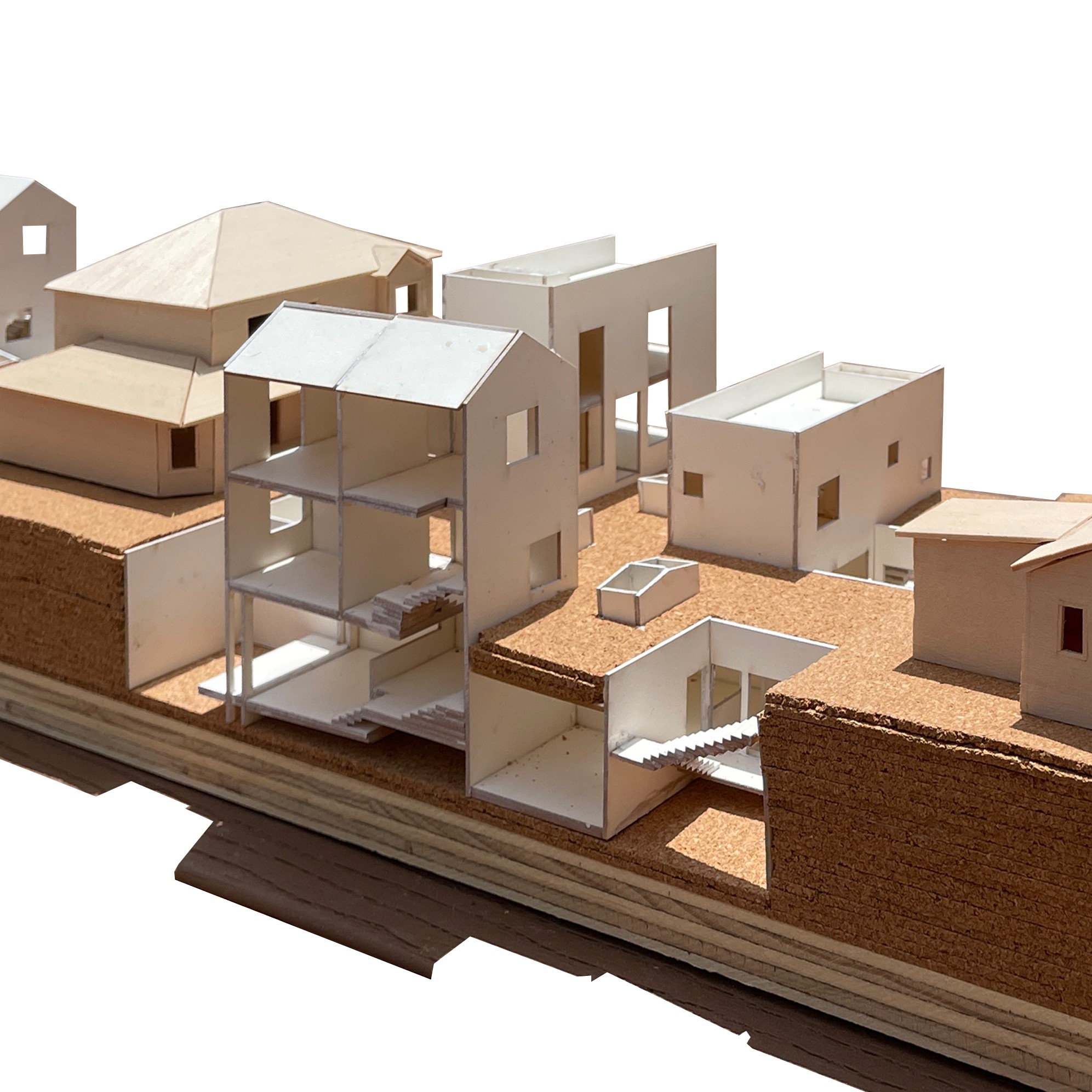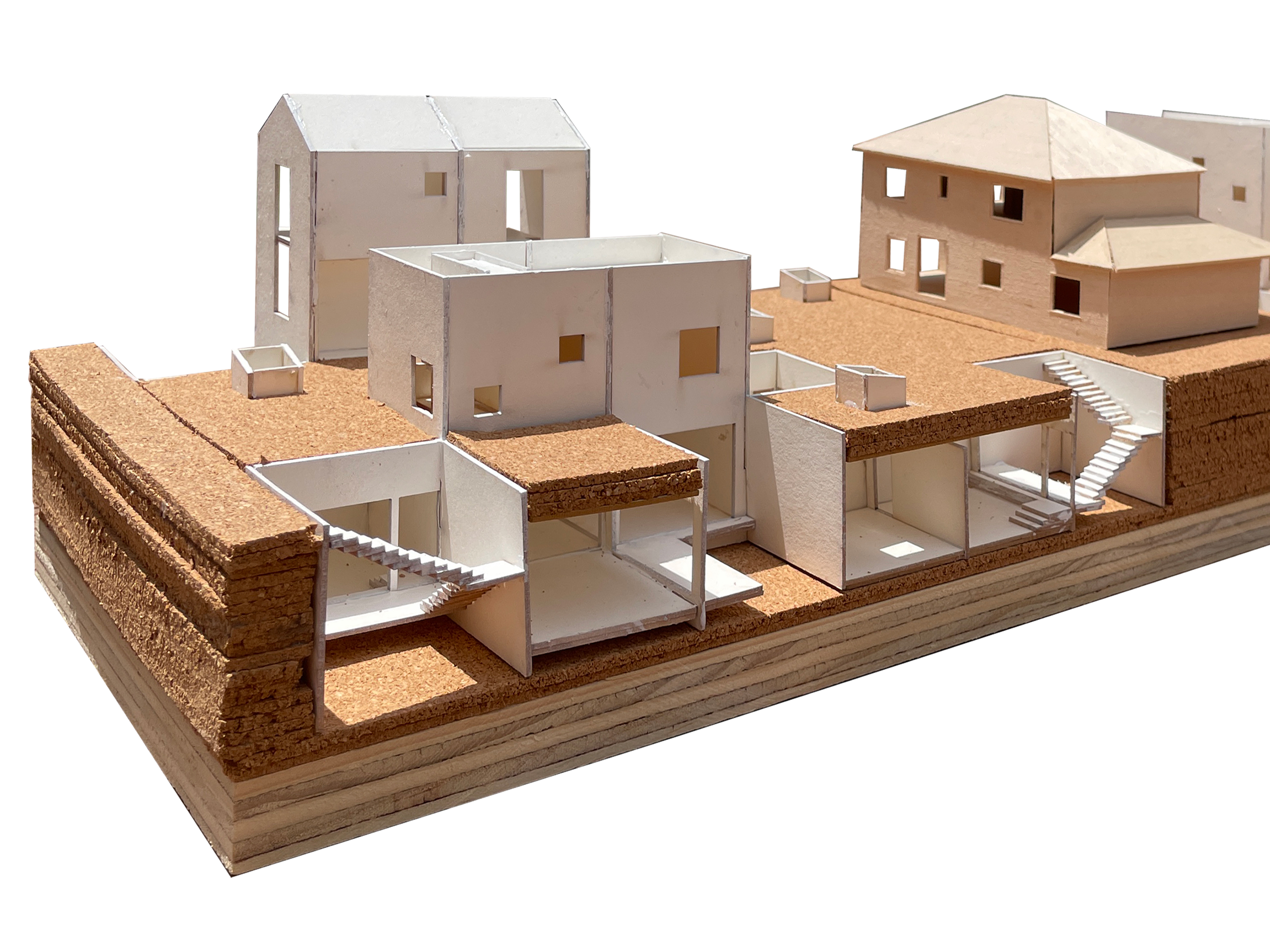love thy neighbor: digging deep for housing solutions in single-family Seattle
advisors: Inaki Alday, Cordula Roser Gray, Ammar Eloueini
special thanks to Sasha Archibald and Frances Richard
special thanks to Sasha Archibald and Frances Richard
 a survey of tract home typologies in north seattle, washington.
a survey of tract home typologies in north seattle, washington.building on the Places Journal summer fellowship: thinking about house I grew up in. It’s covered by a racially restrictive covenant and some pretty regressive zoning. So what next? How does the neighborhood densify?

site densification over time (+ what that might look like with conventional upzoning)
Outcomes from “conventional upzoning” can leave a lot to be desired. Any density increase is welcomed, but it’s maddening to advocate for when the results are rows of two-car garages topped with what the AIA called a “sea of generic modern boxes.”
RSL (residential small lot) is a new designation introduced by the city to promote smaller-scale infill, lowering the bar of land per unit to 2,000 sf - a notable increase in density. RSL falls short in that it still maintains single-family development and its requisite parking + setback requirements, just on a smaller scale.
This proposed intervention takes RSL’s principles of high-density, low-rise housing to a conclusion of highest density at single-family scale: eliminating the rings of setbacks required around every house, excavating into the ground to maximize habitable area and preserving open space at grade for residents to enjoy.
see here for a full, still image of the animation



intervention in model form.



Signs like this can be found in pretty much every well-to-do, left-leaning enclave in the U.S. At the same time, those places are often barricaded with policies that are at odds with the values their signs proclaim: single-family zoning, off-street parking minimums, and restrictive covenants all contribute to a picture that makes homeownership and even renting more and more difficult to attain. The act of adding housing can be received as radical, yet the simple act of receiving more neighbors has transformative potential for the collective health and well-being of our neighborhoods.
my gratitude to Casius Pealer and Marianne Desmarais (TuSA) Emilie Taylor Welty and Jose Cotto (the Small Center) Cassidy Maschler (Multistudio) Seth Welty (Colectivo) Frances Richards and Sasha Archibald (Places Journal) and Aron Chang (Civic Studio). Their collective support and mentorship throughout this process was invaluable.